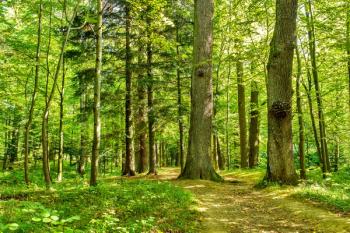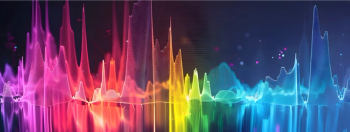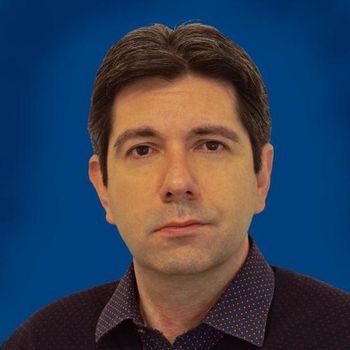
Nonprofit Brings Hands-On Laboratory Experience to Young Students to Promote STEM Careers
In the United States, a lack of qualified candidates for jobs in science, technology, engineering, and math (STEM) underscores an urgent need for educators to find ways to draw students into these areas of study.
In the United States, a lack of qualified candidates for jobs in science, technology, engineering, and math (STEM) underscores an urgent need for educators to find ways to draw students into these areas of study. As a result, at least one concerned group has come up with a creative way to spark interest and excitement in STEM careers among young students in New Jersey.
Students 2 Science (S2S), a six-year-old program, allows middle school and high school students to get hands-on experience in scientific experimentation. The commercial grade Technology Center, located in East Hanover, New Jersey, offers students, especially those in underrepresented school districts, the opportunity to conduct challenging experiments side-by-side with professional scientists in a real laboratory, using sophisticated laboratory instruments such as spectrophotometers and chromatographs.
With a goal of reducing the intimidation that is often associated with STEM-related learning, the program takes students out of their normal routine and brings them into a functioning laboratory work environment, connecting them with successful analytical chemists, other scientists, and engineers, and exposing them to the potential financial and social benefits of a career in a STEM-related field. The program is open to both girls and boys, addressing the gender gap in STEM, in addition to the workforce gap.
During their visits to the facility, students work on real life problems in a variety of STEM fields. “All of our experiments that the kids do while they’re here are aimed at being inspirational and motivational,” Paul Winslow, the program’s president, explained. “We present them with current, relevant problems: Which energy drink works the best? After testing all of the commercially available products, they learn that nothing beats a good old cup of “Joe,” Winslow said.
Middle School students visit the Technology Center three times. During the first visit the students are introduced to spectroscopy and use of the “visible” portion of the electromagnetic spectrum to identify unknown cations. Day two is dedicated to solutions, “The students use FT-IR spectroscopy to identify the appearance and disappearance of specific bonds in organic compounds,” Winslow said. On the third visits, students formulate their own sunscreen and evaluate their performance versus commercially available products using UV-vis spectroscopy.
The group’s work is enabled through contributions from corporations, foundations, and individuals. The roughly 5000 square feet of commercial laboratory space is equipped with more than $3 million of analytical instrumentation to perform wet, organic, and analytical chemistry; chromatography; spectroscopy; biology; botany; biotechnology; ecology; computer science; engineering; and robotics.
In addition, in November 2015, the organization launched the Virtual Laboratory, or V-Lab, a fully interactive web-based, multilingual hybrid distance-based learning program that supports K–12 students and teachers. The V-Lab program provides a series of supplemental age-appropriate hands-on science experiments to be performed by students in their local classroom and simultaneously at the S2S Technology Center by use of high-speed video teleconferencing. S2S scientists demonstrate how to conduct each experiment and describe how the techniques are used in real-world applications. The program provides the kits, trains the teachers, and conducts a joint session using video conferencing. Each kit contains enough materials for a teacher to run the experiments again, on their own, two to three more times.
Volunteer Opportunities
For scientists who are motivated to help promote STEM education, the S2S program offers volunteer opportunities in several areas.
Program Mentors provide coaching, inspiration, and motivation while educating the students. They answer questions about the career application of the laboratory techniques being learned, and also ensure the safety of the students.
Laboratory Assistants help students to follow procedures, perform calculations using instrumentation, and offer recommendations to instructors (after students have completed the program) for modifying experimental procedures and ensuring the safety of the students.
Instructors are subject-matter experts who instruct students as they conduct each experiment. They stay at the same experimental station throughout the day, providing clear and concise information and ensuring the safety of the students.
Grant Writing Assistants search corporate and foundation websites to identify and recommend specific grant opportunities.
Special Events Coordinators assist in scheduling, advertising, and coordinating board meetings, open houses and information sessions, and fund raisers.
Creative Management volunteers prepare and review collateral materials such as web pages, press releases, newsletters, solicitations, invitations, marketing, and promotional materials.
“Volunteers are critical to our program,” Winslow said, noting that the organization runs about 100 onsite visits a year, which requires over 1000 volunteer days. “Fifteen to twenty local professional scientists from our corporate sponsors take time off from work or their companies give them time off to come work with the kids,” he said. “We couldn’t do this without our scientist volunteers.”
Registration for volunteers is available on-line at
Newsletter
Get essential updates on the latest spectroscopy technologies, regulatory standards, and best practices—subscribe today to Spectroscopy.





